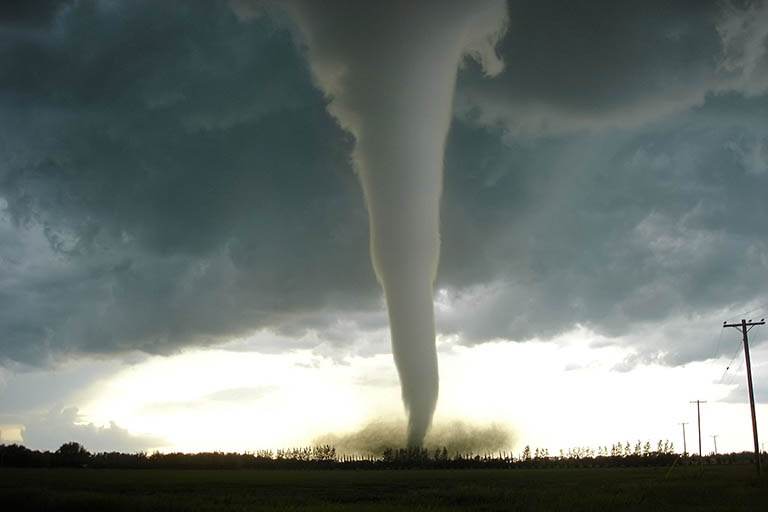Deadly tornadoes in Alabama on March 3 provide a brutal reminder of the importance of knowing what to do when tornado warnings are issued. Indiana University's annual Operation Stormy Weather tornado drill on March 19 will let students and employees test their knowledge while IU tests its IU-Notify alarm system.
"Indiana University conducts a tornado drill once each year," said Benjamin Hunter, associate vice president for public safety and institutional assurance; superintendent of public safety. "I urge you to use this time as a refresher to review where you would go in your academic building, home, student center or wherever you might be when a tornado might strike. In Indiana, tornadoes can strike anytime and anywhere, so this review is important to you and your family."
Indeed, some Hoosiers already have sheltered during a tornado warning issued last month.
The safest places to be during tornadoes are in basements, interior rooms or hallways, or severe weather shelters, which are indicated by a tornado funnel cloud symbol. The Protect IU website also provides information about preparing for tornadoes and severe weather.
IU's drill on March 19 is in conjunction with drills conducted by schools, municipalities and emergency management agencies statewide as part of the National Weather Service's Severe Weather Preparedness Week for Indiana.
During IU's drill, students, staff and faculty members are expected to respond as they would to the real deal: heading to their severe weather shelter or the safest location available.
What to expect:
- IU-Notify alerts -- using most modalities, including email, text and Alertus desktop alerts -- will be sent between 10:15 and 10:30 a.m. (9:15 and 9:30 a.m. CDT at IU Northwest) announcing the beginning of the drill.
- No all-clear will be issued, mimicking a real-life warning, so students, staff
and faculty can leave their safe shelters at the expiration time in the warning. - Students do not need permission from faculty to comply with emergency instructions during emergencies and drills. They can leave class to locate a severe weather shelter, but they must return.
- Outdoor warning systems should issue tornado warnings but people inside may not hear these because they are designed to alert people who are outside.
- A survey will be sent to gather feedback for improving the process.
It's important to know where to go before the drill occurs. Most buildings throughout IU have maps posted by main entrances to indicate shelter locations. They also have staff who serve on emergency action committees that have prepared Emergency Action Plans for their building or campus. These plans, among other things, include procedures for how to respond to tornadoes and other threats.
Some plans are available online, and others can be accessed by contacting the building coordinator or building contact for specific buildings. The Protect IU website contains information for campus and building-specific plans and building contacts.
During the March 19 drill, here are some other considerations:
- If you're working in a lab or conducting another critical function that cannot be interrupted (i.e. dentistry procedure), the people who cannot seek shelter during the drill should take a few minutes to review the procedures and know where you would have gone to seek shelter, and those procedures should be discussed with anyone else in the vicinity. If this were a real tornado warning, you would be expected to proceed to a designated tornado shelter location.
- When IU-Notify messages are delivered, recipients should be sure that those around them are aware of the message in case they are not subscribed to IU-Notify. They should check to see if anyone in their vicinity needs assistance in following severe weather procedure.
Also be certain that people from other countries -- who may be used to a siren signaling a tsunami -- know what the siren means in the United States.
Post an #IUShelterSelfie on social media of your shelter spot and we'll share. Participants also will receive stickers.


